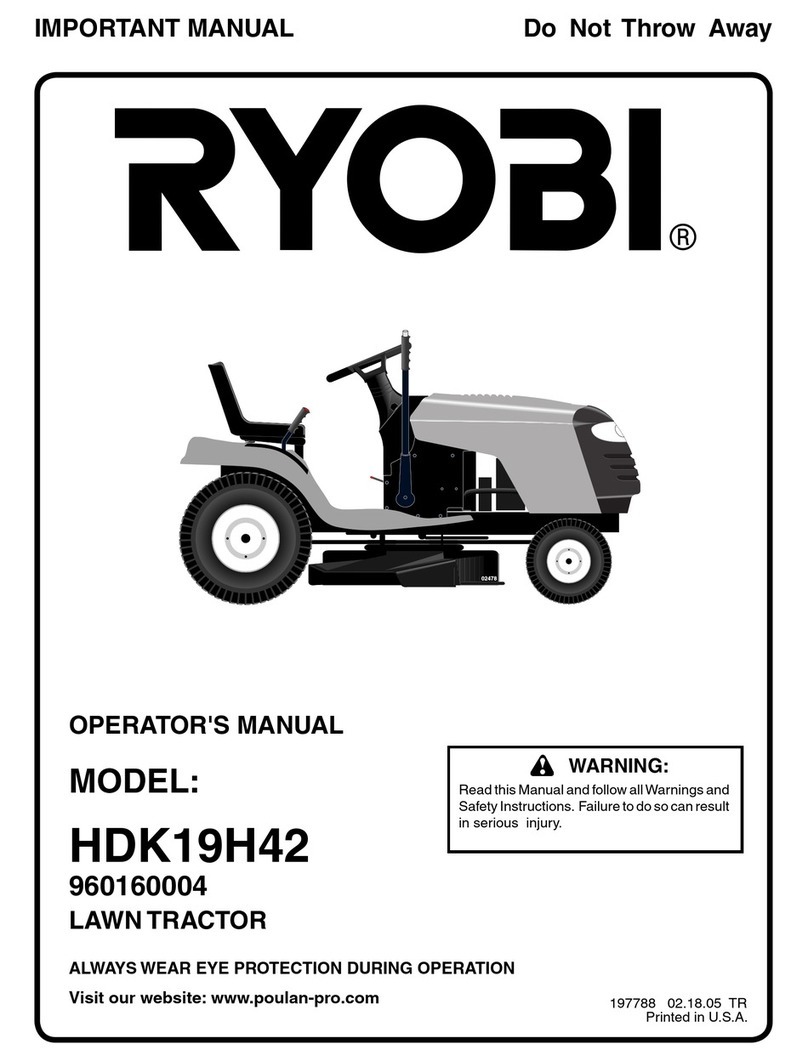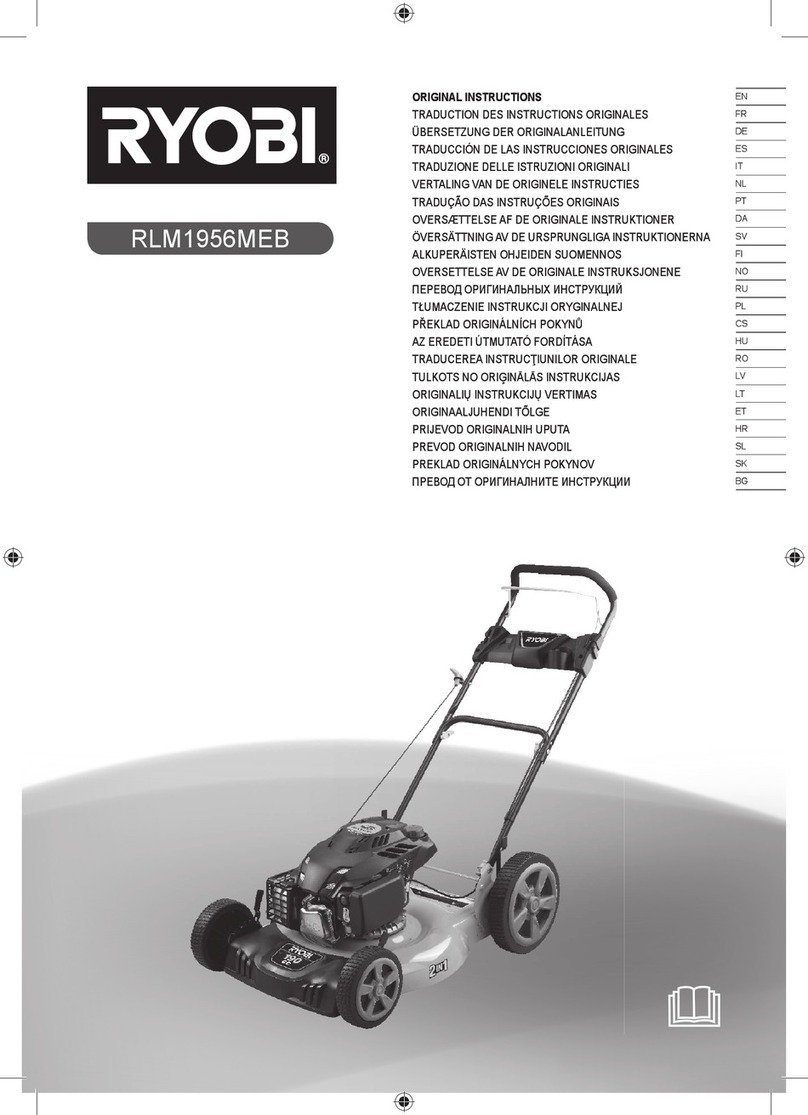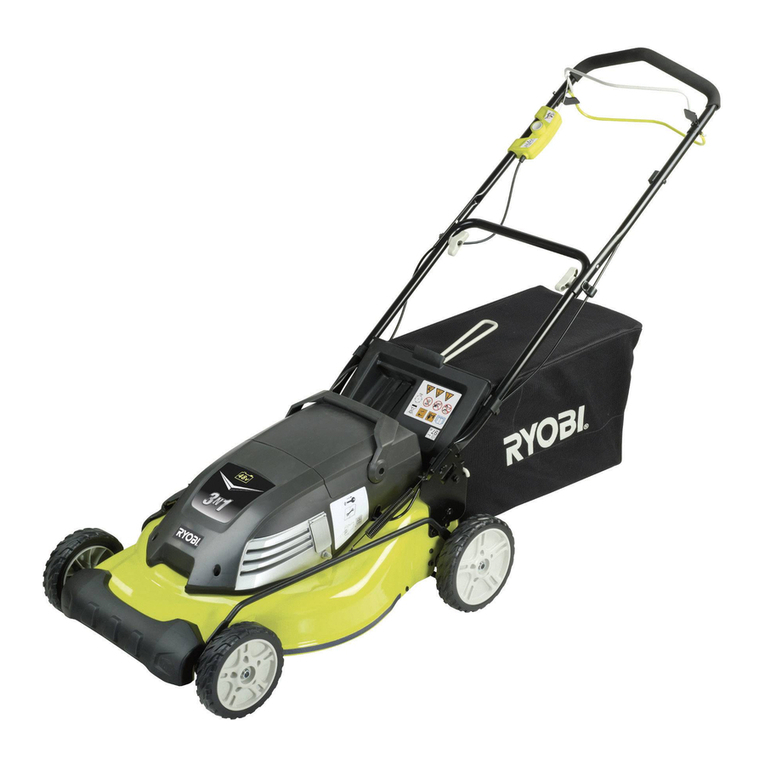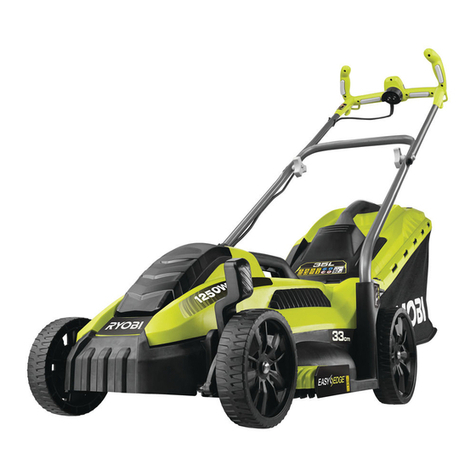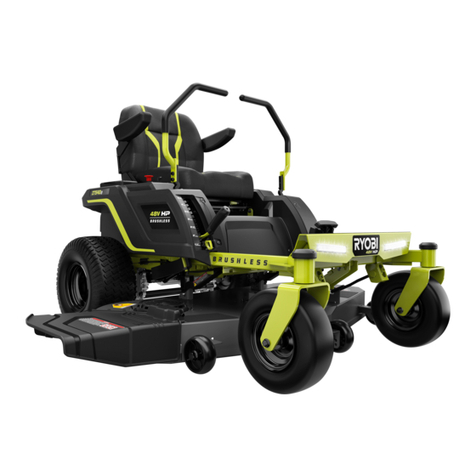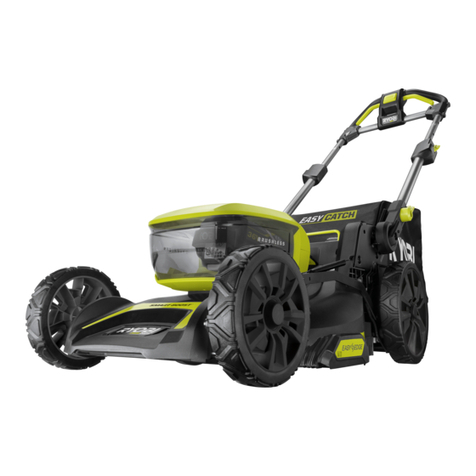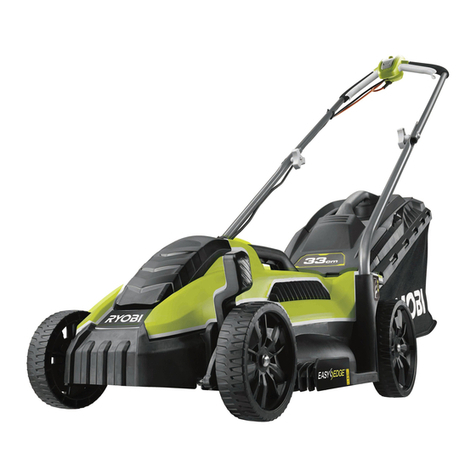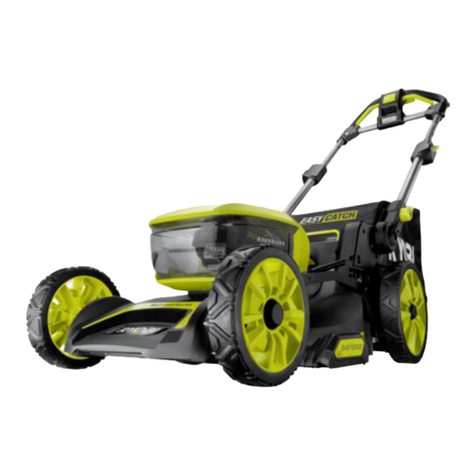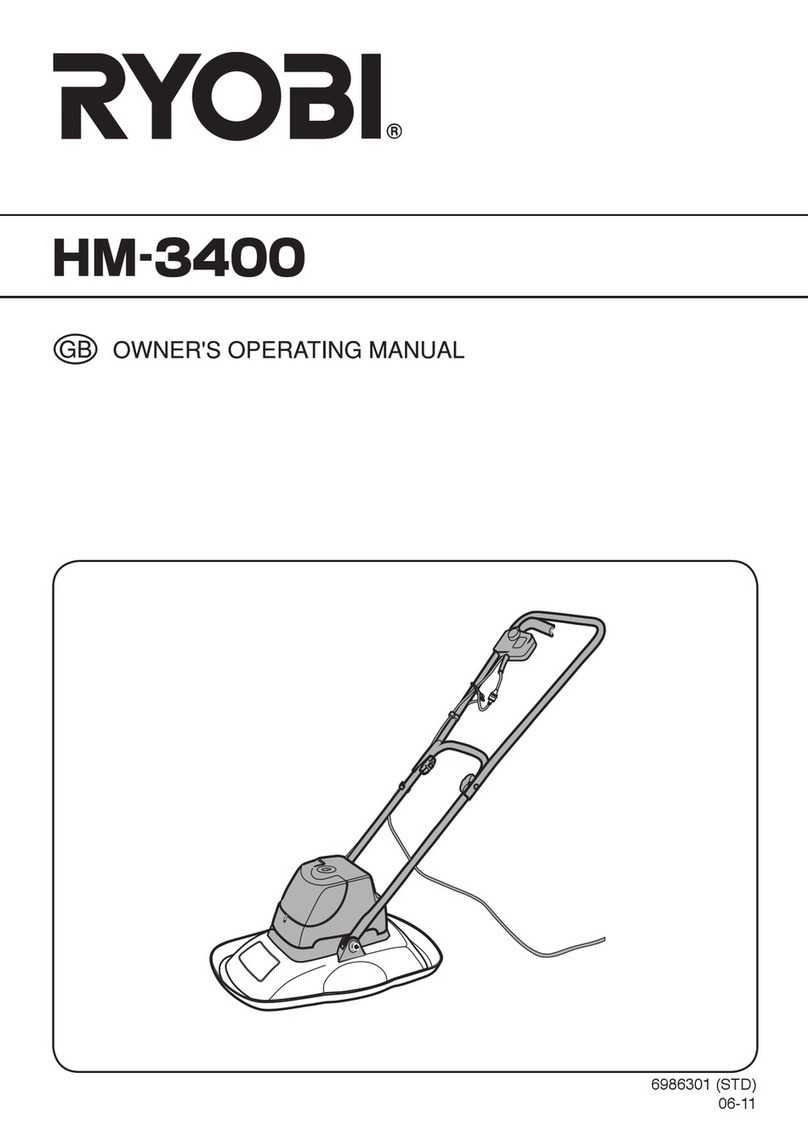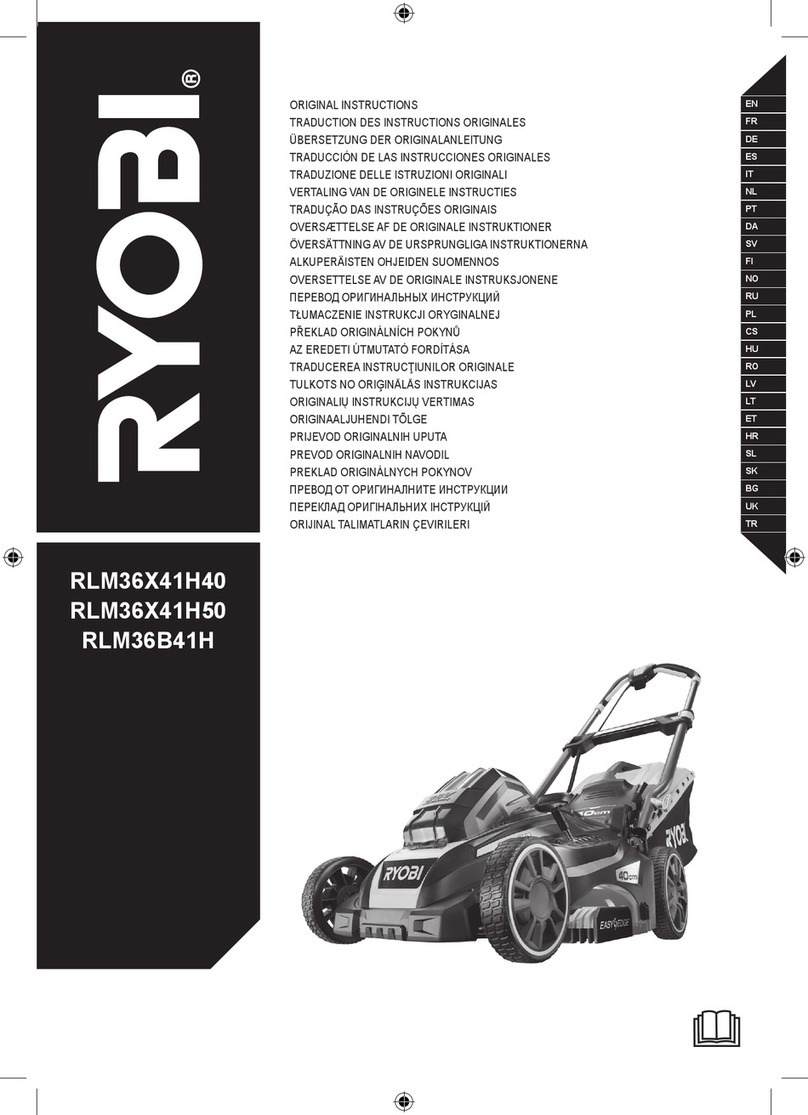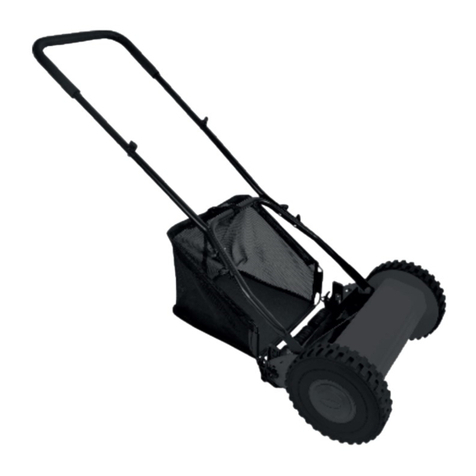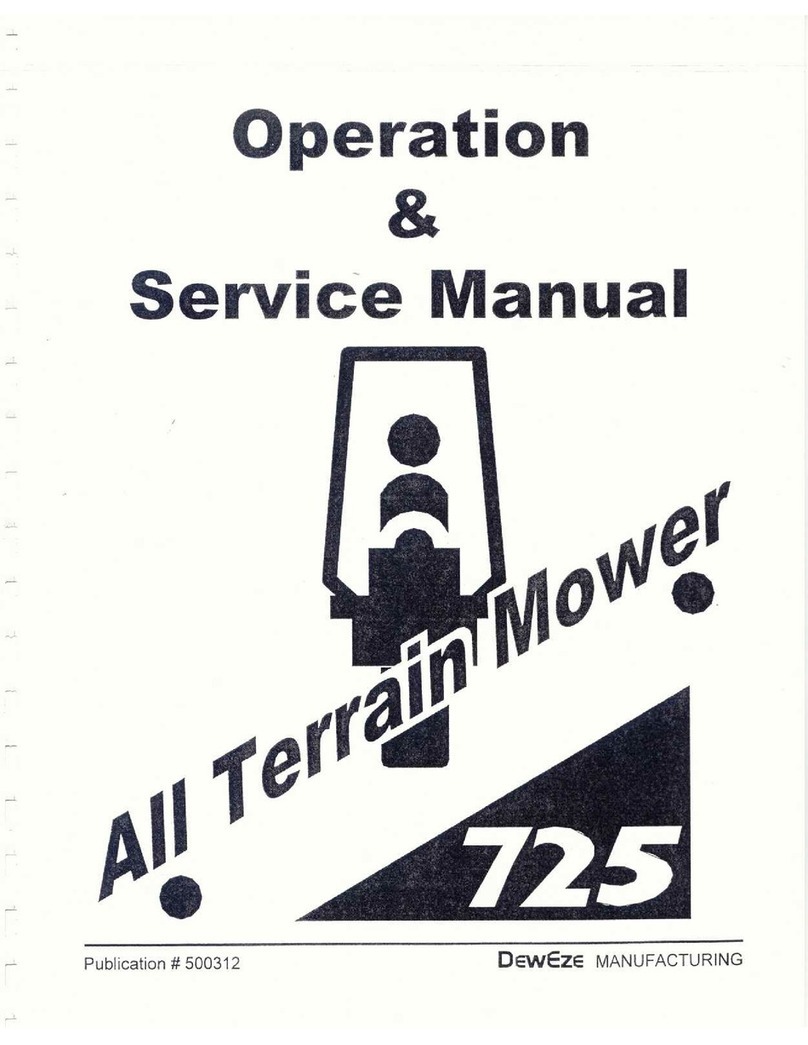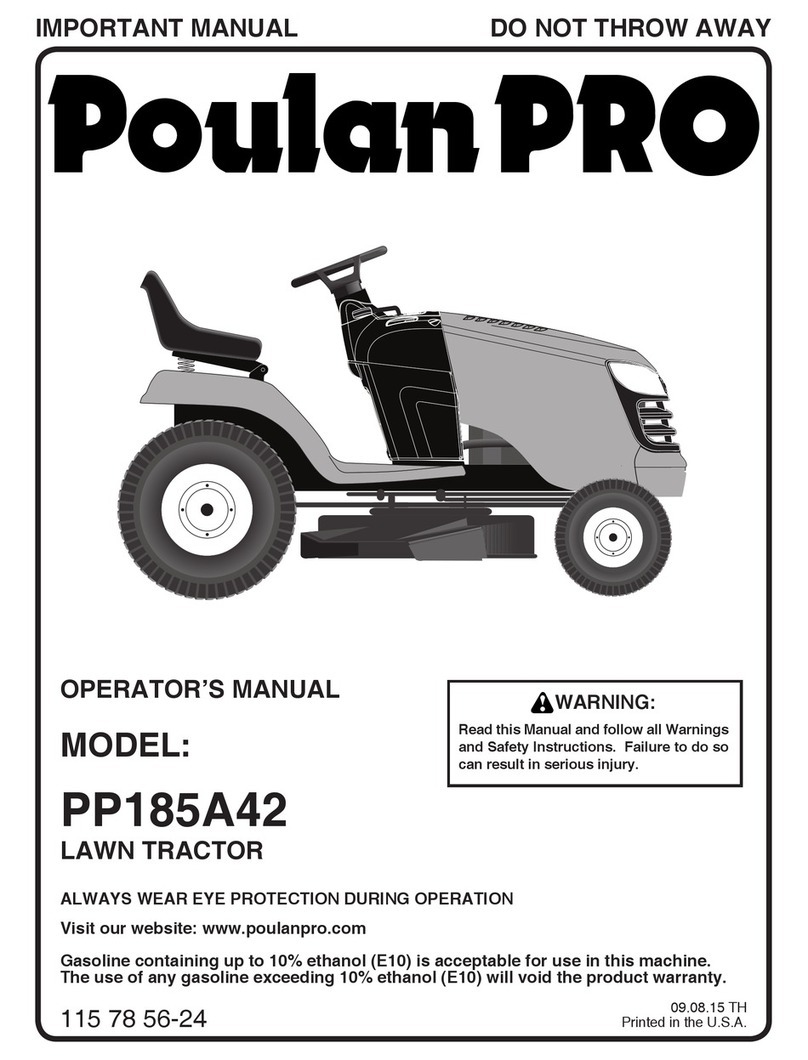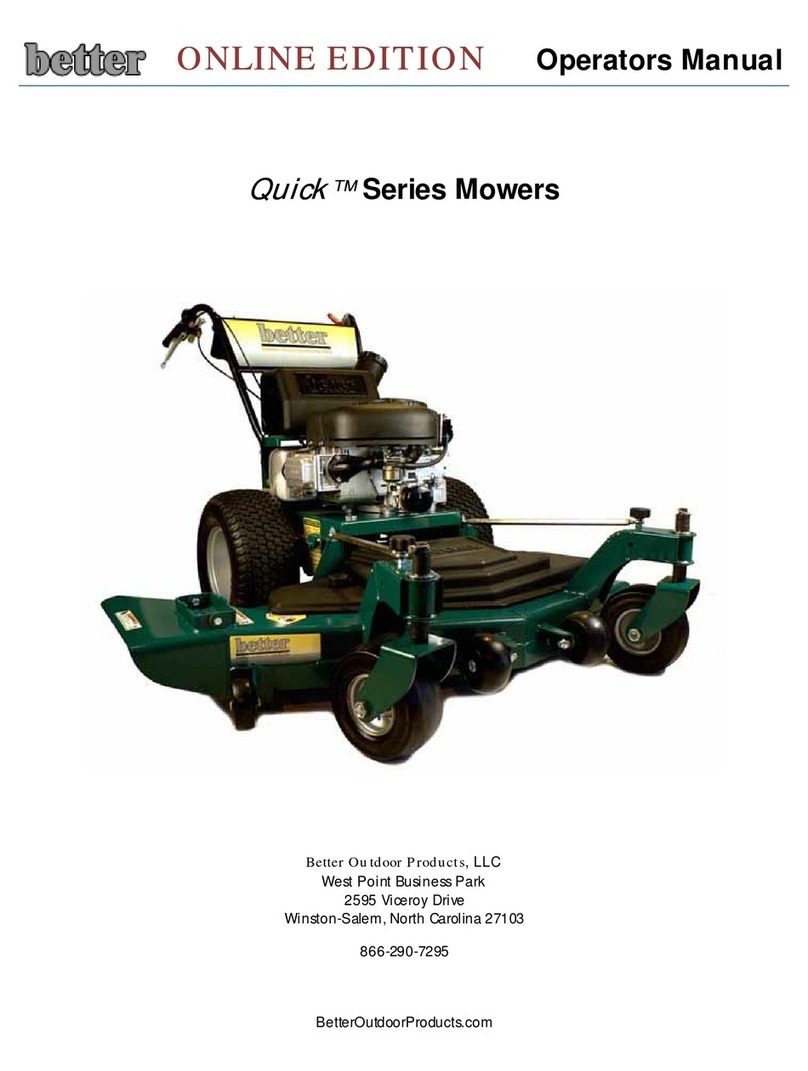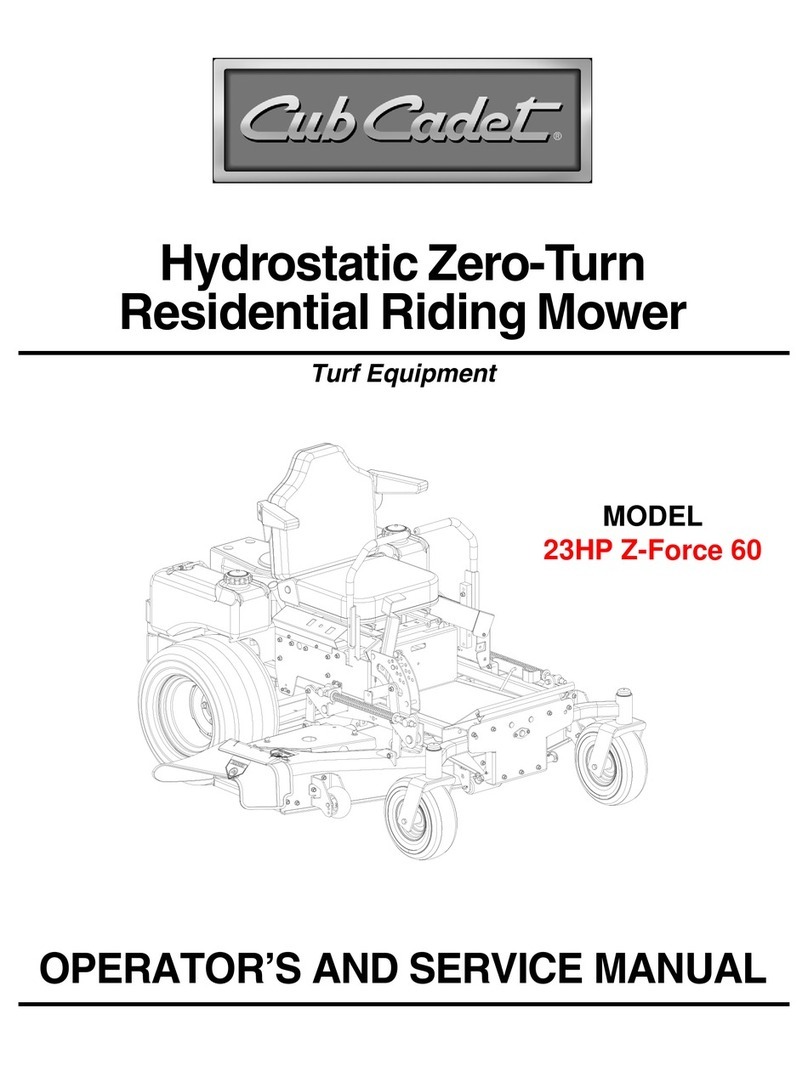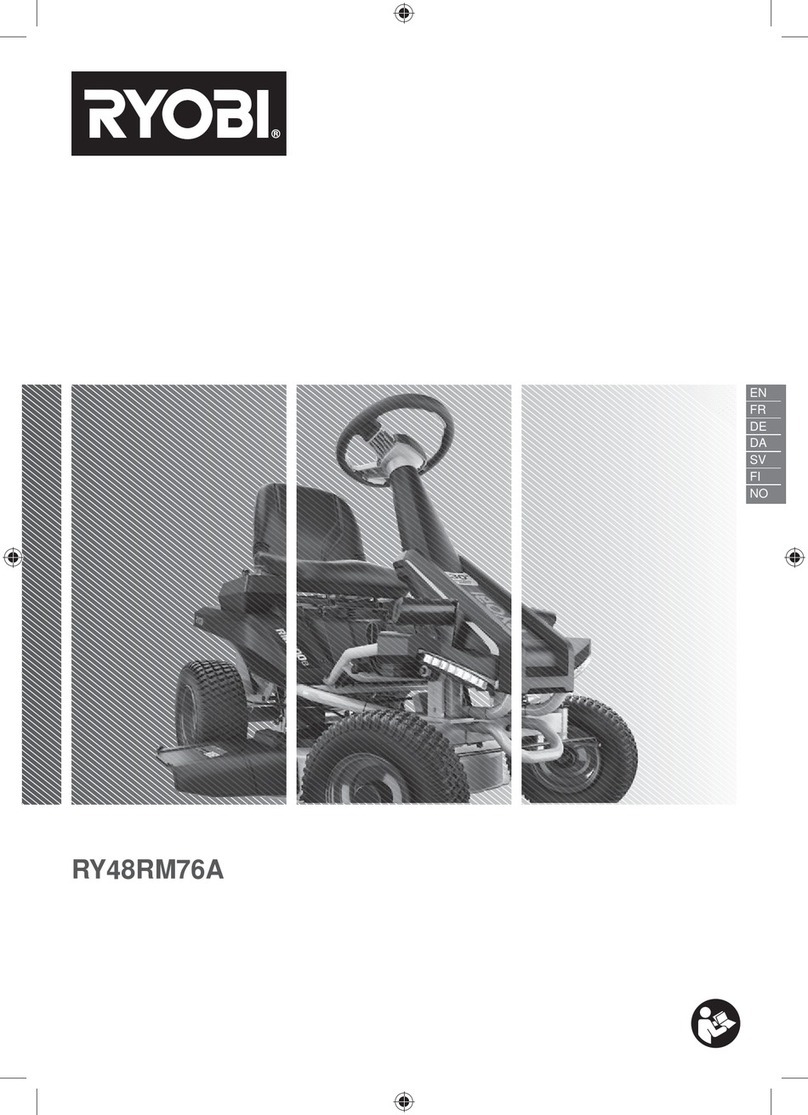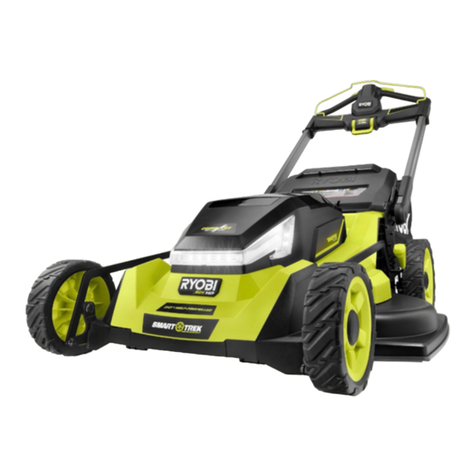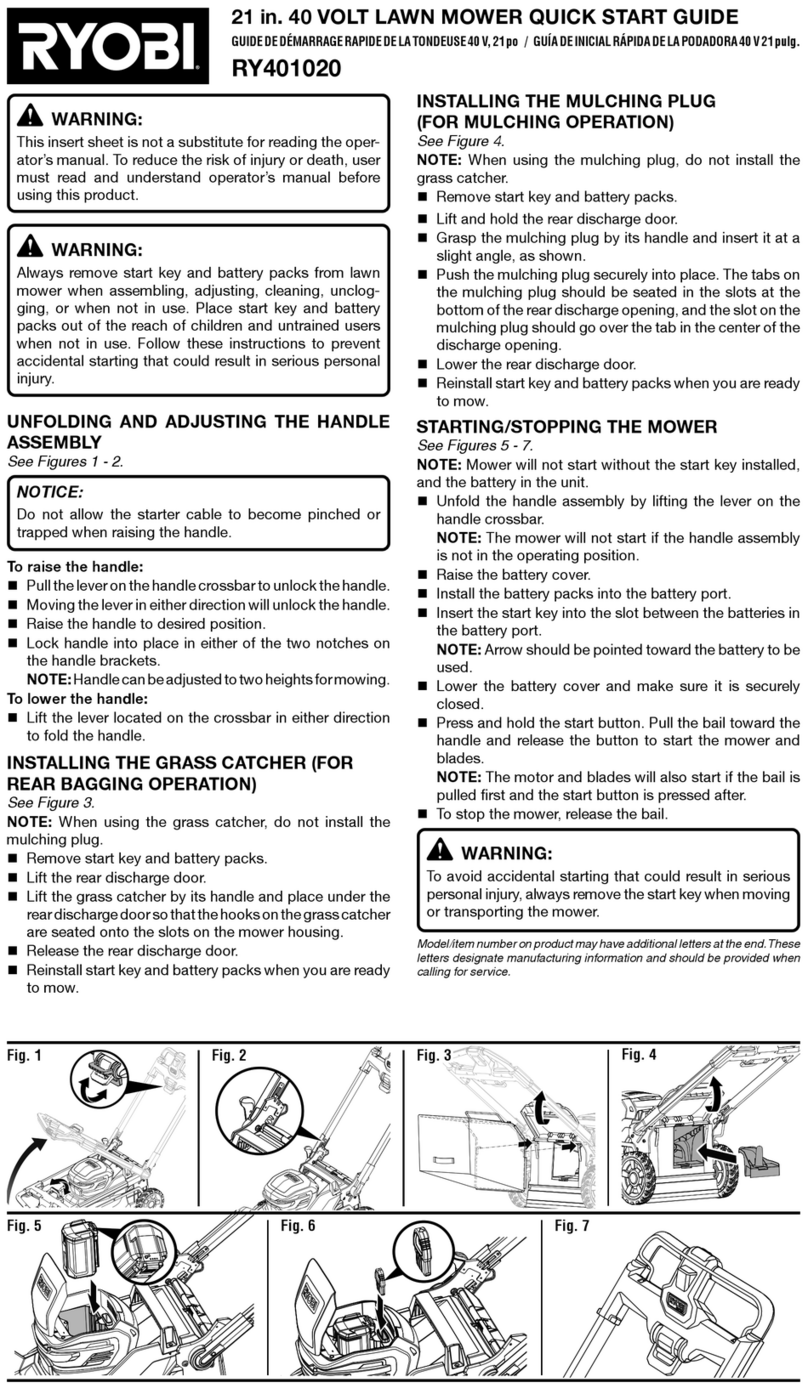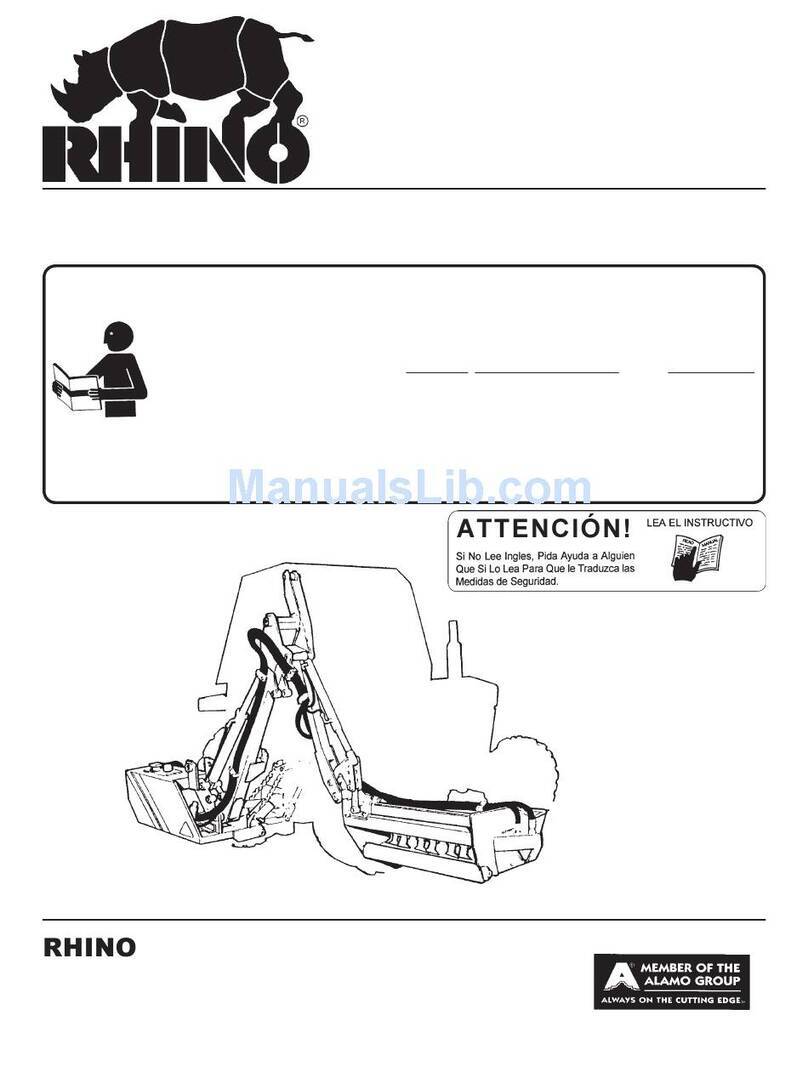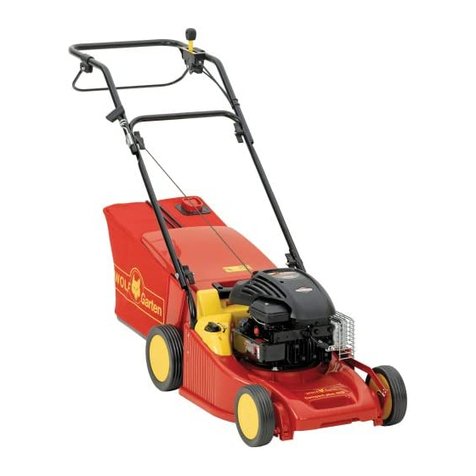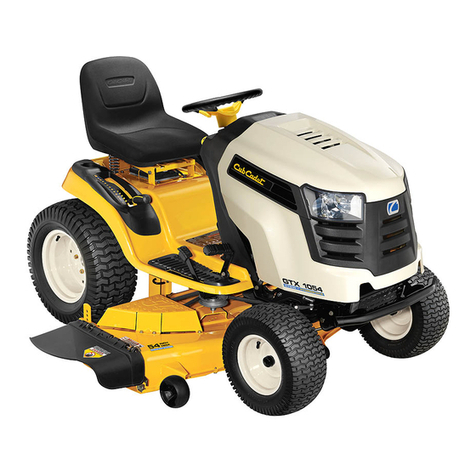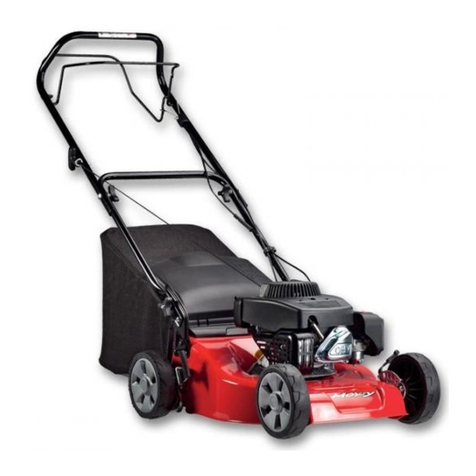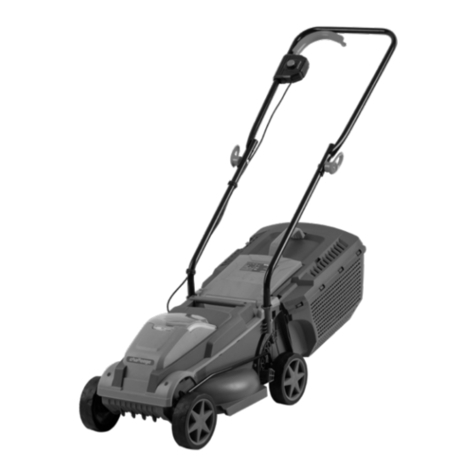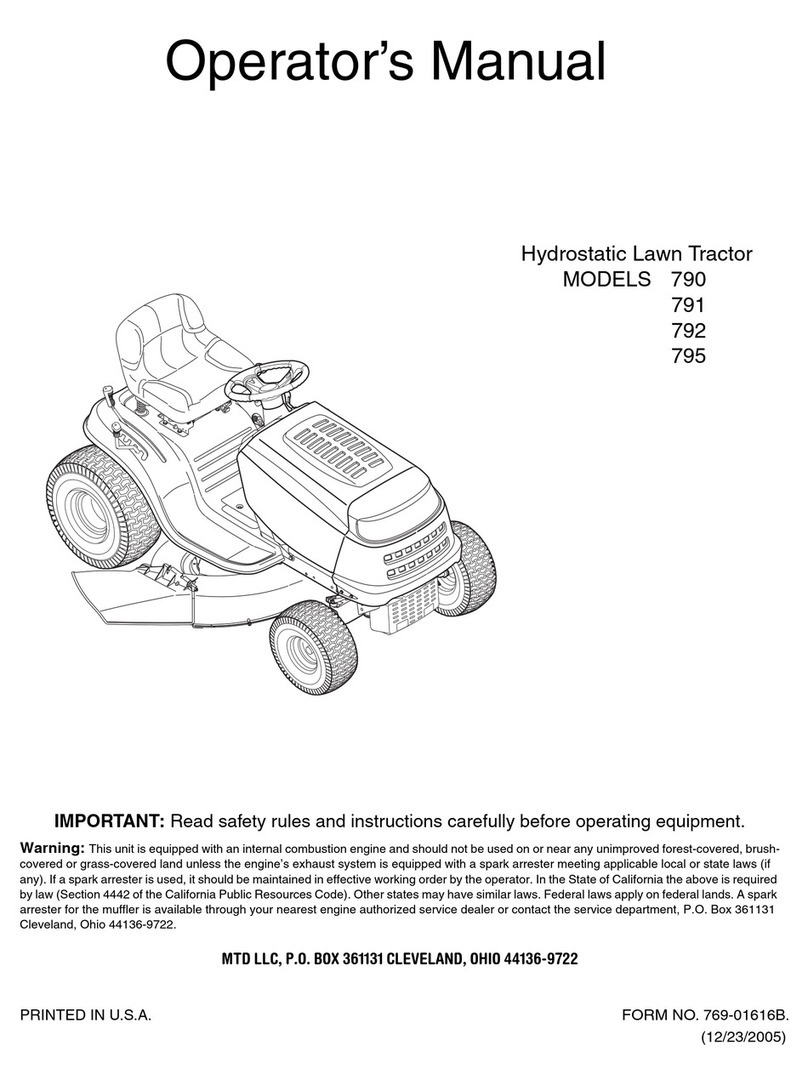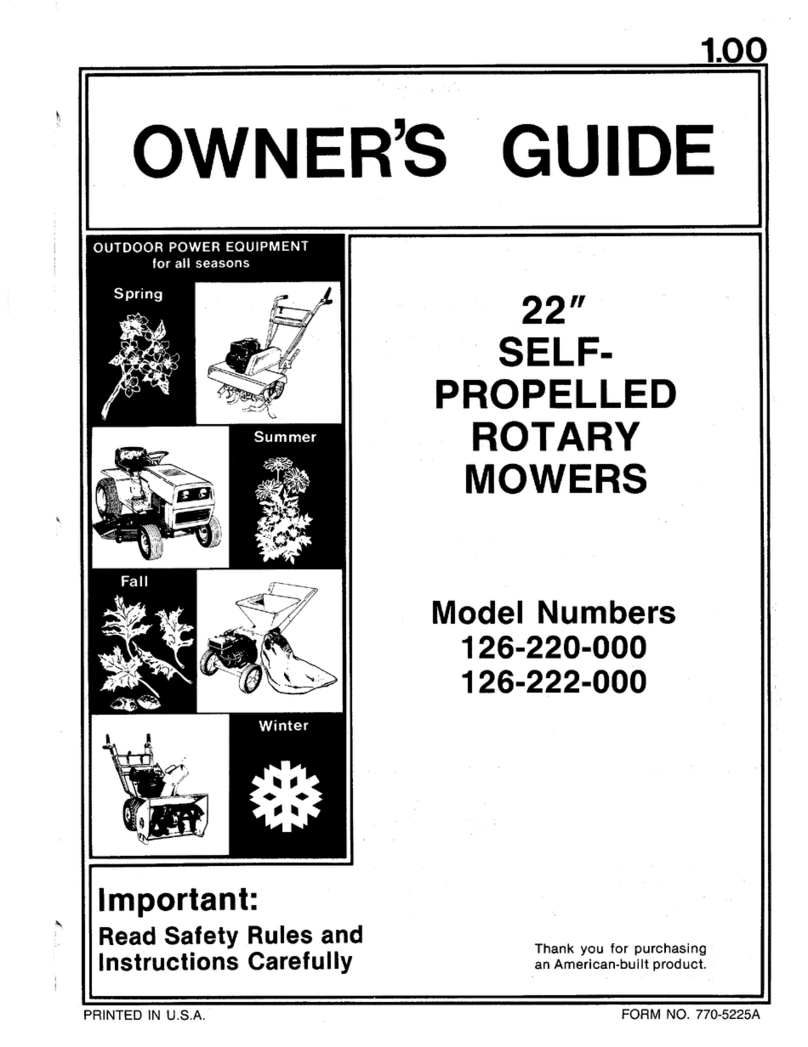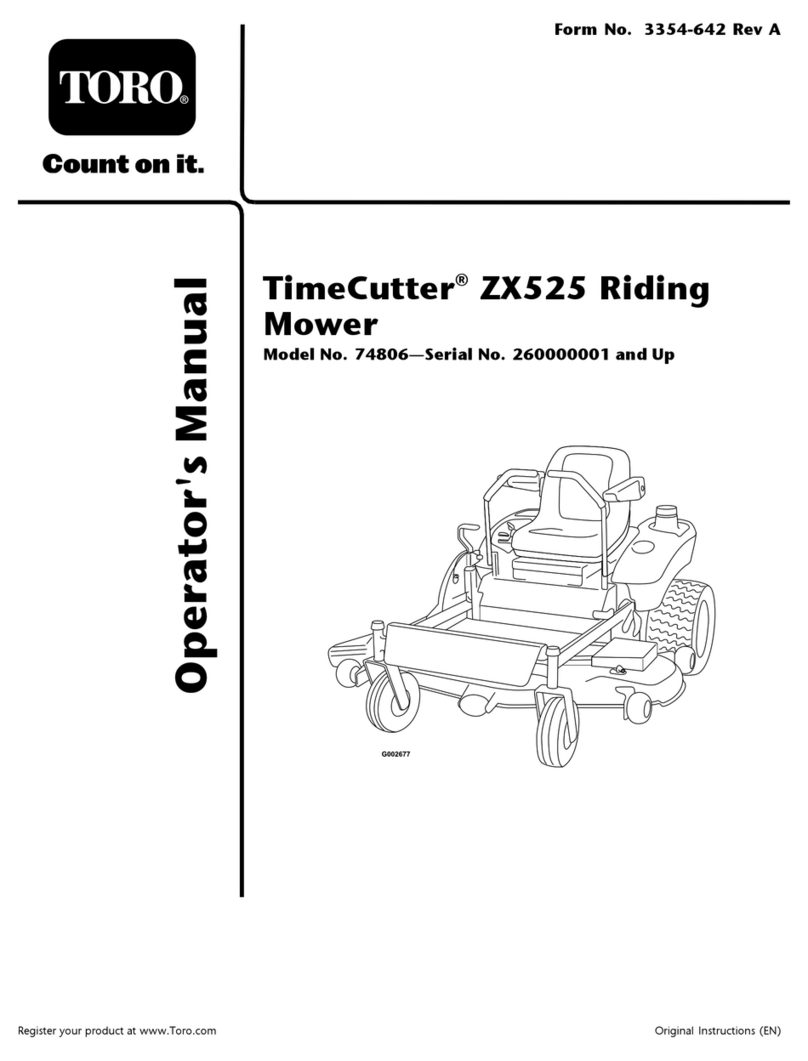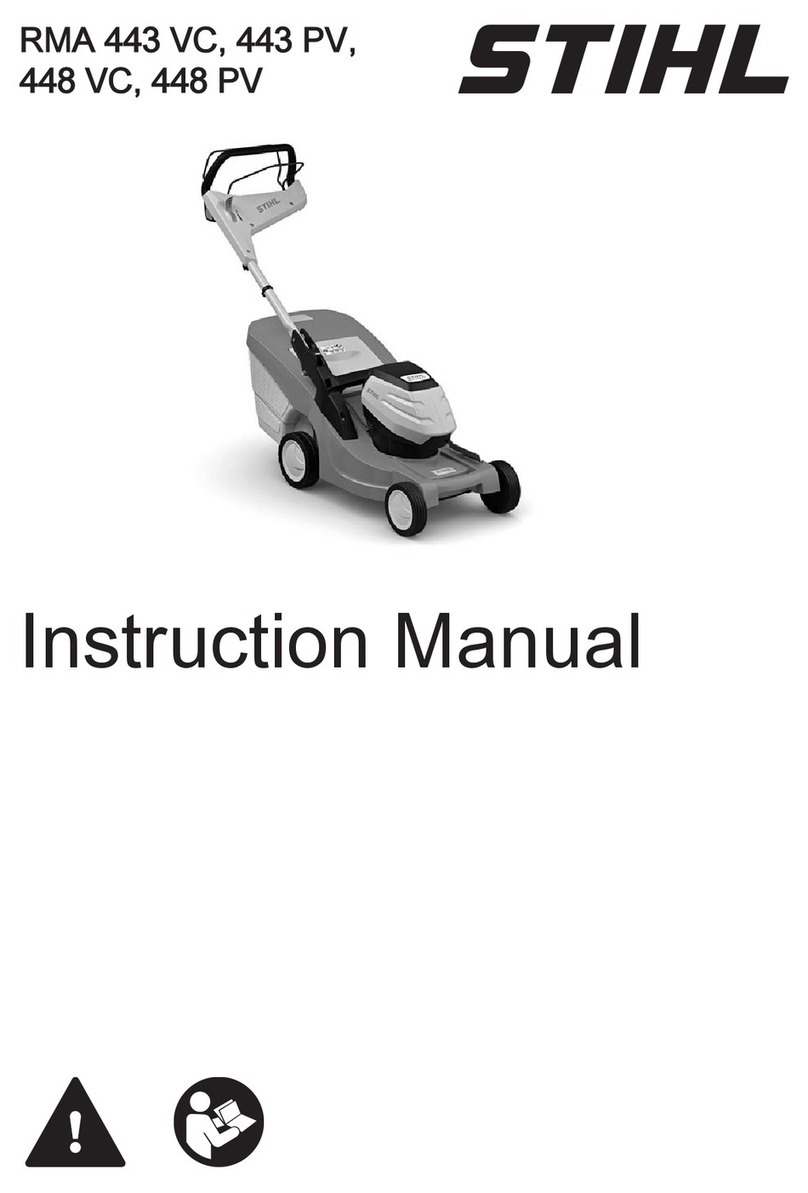
ŶPlease note that cutting long grass will drain the battery
quicker than cutting shorter grass.
ŶStop the blade when crossing gravel surfaces.
ŶDo not pull the mower backward unless absolutely
necessary. If you must back the machine away from a
wall or obstruction, first look down and behind to avoid
tripping or pulling the machine over your feet.
ŶStop the blade(s) if the machine has to be tilted for
transportation when crossing surfaces other than grass,
and when transporting the machine to and from the
area to be mowed.
ŶNever operate the machine with defective guards
or shields, or without safety devices, for example,
deflectors and/or grassboxes, in place.
ŶSwitch on the motor according to instructions and keep
hands and feet away from cutting area. Keep clear of
the discharge opening at all times.
ŶNever pick up or carry a lawnmower while the engine
is running.
ŶRemove isolator key for the below cases:
Ɣwhenever you leave the machine
Ɣbefore cleaning a blockage
Ɣbefore checking, cleaning or working on the
machine
Ɣafter striking a foreign object; inspect the appliance
for damage and make repairs as necessary
Ɣbefore clearing the grassbox
Ɣif the machine starts to vibrate abnormally (check
immediately)
Ɣwhen not in use and storing the machine
Ɣwhen recharging and removing/inserting battery
pack
ŶAvoid holes, ruts, bumps, rocks, property stakes, or
other hidden objects. Uneven terrain could cause a slip
and fall accident.
ŶIf the machine should start to vibrate abnormally,
stop the motor and check immediately for the cause.
Replace the blade if it is unevenly worn or damaged
in any way. Vibration is generally a warning of trouble.
ŶIf the machine strikes a foreign object, follow these
steps:
ƔStop the machine by releasing the power lever, wait
until the blade comes to a complete stop, and then
remove isolator key.
ƔThoroughly inspect the machine for any damage.
ƔReplace the blade if it is damaged in any way.
Repair any damage before restarting and continuing
to operate the mower.
ƔUse the right appliance. Do not use the machine for
any job except that for which it is intended.
ŶWhen not in use, mower should be stored in a well-
ventilated, dry, locked up place-out of the reach of
children. The isolator key should also be removed.
ŶFollow manufacturer’s instructions for proper operation
and installation of accessories. Only use accessories
approved by the manufacturer.
SERVICE
ŶService on the product must be performed by qualified
repair personnel only. Service or maintenance
performed by unqualified personnel could result in a
risk of injury to the user, or damage to the machine.
ŶUse only identical replacement parts when servicing the
product. Use of unauthorised parts may create a risk
of serious injury to the user, or damage to the product.
BATTERY RULES FOR SAFETY
ŶBattery operated units do not have to be plugged
into an electrical outlet; therefore, they are always in
operating condition. Be aware of possible hazards even
when unit is not operating.
ŶRemove the battery pack before making any
adjustments, cleaning, or removing material from the
unit.
ŶEnsure the isolator key is removed before inserting
battery pack.
ŶA battery pack must be recharged only with the charger
specified by the manufacturer. Using a charger with an
incompatible battery pack may create a risk of fire. Use
battery pack only with charger listed.
ŶUse only battery pack intended specifically for the
machine. Use of any other battery packs may result in a
risk of fire, electric shock, or injury to persons.
ŶWhen battery pack is not in use, keep it away from
other metal objects like, paper clips, coins, keys, nails,
screws, or other small metal objects, that can make a
connection from one terminal to another. Shorting the
battery pack terminals together may cause sparks,
burns, or a fire.
ŶDo not place battery products or their batteries near
fire or heat. This will reduce the risk of explosion and
possibly injury.
ŶDo not open or mutilate the battery pack. Released
electrolyte is corrosive and may cause damage to the
eyes or skin. It may be toxic if swallowed.
ŶDo not short-circuit the battery pack. There is danger
of explosion.
ŶProtect the battery pack against moisture and water. Do
not charge unit in a damp or wet location. Following this
rule will reduce the risk of electric shock.
ŶIf electrolyte contacts the skin, wash it off immediately
with water. If electrolyte contacts the eyes, flush
thoroughly and immediately with water. Seek medical
attention.
ŶIn case of damage and improper use of the battery,
vapour may be emitted. Provide for fresh air and seek
medical help in case of complaints. The vapour can
Safety
2
